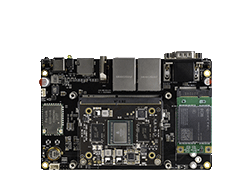GPIO¶
The BM1684 chip contains 3 groups of GPIO controllers, each of which controls 32 GPIOs, which correspond to the Linux device nodes as follows:
| GPIO Controller | Linux Device Node | GPIO Physical Number | GPIO Logical Number |
|---|---|---|---|
| #0 | /sys/class/gpio/gpiochip480 | 0 to 31 | 480 to 511 |
| #1 | /sys/class/gpio/gpiochip448 | 32 to 63 | 448 to 479 |
| #2 | /sys/class/gpio/gpiochip416 | 64 to 95 | 416 to 447 |
For example, to operate GPIO6, you need:
Number conversion: The physical number is
6, the corresponding logical number is(480 + (6 - 0)) = 486,0represents the start of the GPIO physical numberExport the GPIO, run as root user:
echo 486 >/sys/class/gpio/export
Operate GPIO, set to read input or output specified value:
cd /sys/class/gpio/gpio486 # set input mode echo in >direction cat value # set output mode echo out >direction # output low level echo 0 >value # output high level echo 1 >value
There are a few things to note:
If the GPIO has been applied by other drivers, it cannot be exported successfully, and subsequent read and write operations cannot be performed.
Involving the multiplexing of IO functions, if the function of the pin is already GPIO, the above method can be used; otherwise, the pinctrl state must be specified in the device tree.
Generally speaking, if you want to easily operate a GPIO in the user layer, you can add it as a GPIO-LED in the device tree. Please refer to linux-linaro-stable/arch/arm64/boot/dts/bitmain/bm1684_firefly.dtsi for details.
